Skip over navigation


Or search by topic
Number and algebra
Geometry and measure
Probability and statistics
Working mathematically
Advanced mathematics
For younger learners
Match the Matches
Age 7 to 11
Challenge Level 





- Problem
- Getting Started
- Student Solutions
- Teachers' Resources
Match the Matches
Two football teams, Alpha United and Beta Rovers have each played fifteen games in their league.
The data below show how many goals the teams scored in their matches.
There are six different collections of data, three show the results for Alpha United and three show Beta Rovers' goals. Can you match the data to the teams?
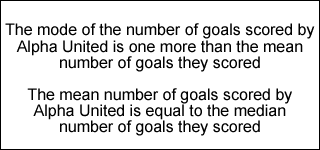
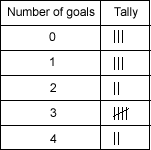
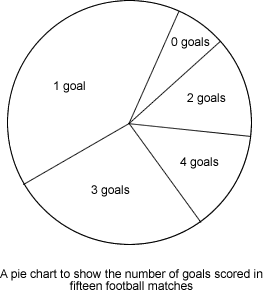
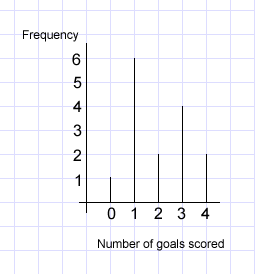
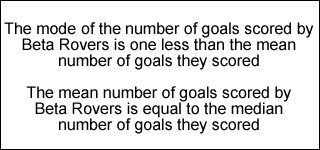
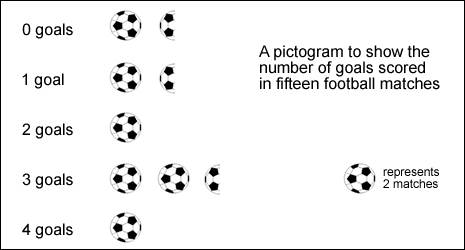
Why do this problem?
This problem could be used at the start of a series of lessons on data handling, or as an assessment opportunity at the end of the unit. It will get children talking meaningfully about mathematics, presenting and justifying arguments.
Possible approach
As an introduction to this task, you may choose to ask general questions about the different forms of data. This might be most helpful in the case of the pie chart if the class is not so familiar with this method of representation. For example, you could ask questions such as:
- Looking at the pie chart, in approximately what fraction of the total number of games did the team score one goal?
- What does the tally chart show us?
This activity would be ideal to tackle in pairs or threes. You could print off this Word document or this pdf containing the six different
forms of data which could be cut up to create six cards. In this way, children would be encouraged to talk to each other as they interpret the data and the richness of their discussion will allow you to assess their understanding.
In the plenary, you can focus on how pupils knew which forms of data go together.
Key questions
What is the total number of goals each team scored over the fifteen matches?
Have you tried comparing two of the charts with each other?
Do you think they represent the same team's goals? Why or why not?
Possible extension
You could challenge children to make their own version of this problem in pairs.
Possible support
It might be helpful for children to be encouraged to make jottings on the cards as they work on this task.
You may also like
In the Playground
What can you say about the child who will be first on the playground tomorrow morning at breaktime in your school?
The Car That Passes
What statements can you make about the car that passes the school gates at 11am on Monday? How will you come up with statements and test your ideas?

